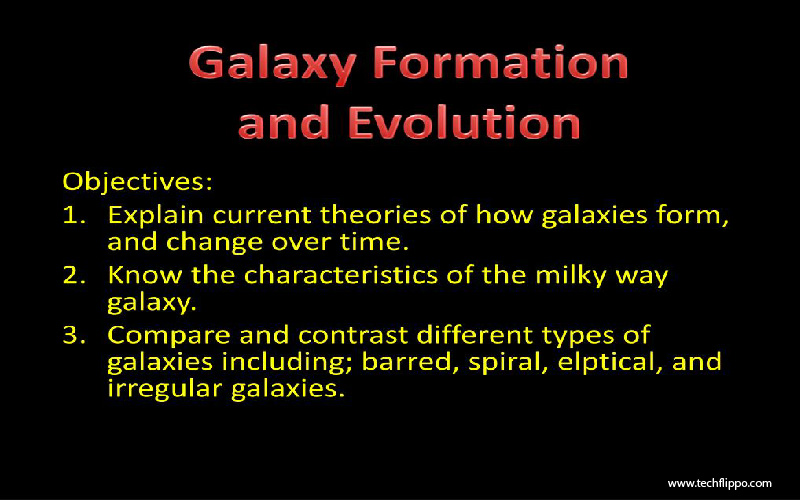Journey through the Cosmos of Galactic Evolution Theories
Embark on a cosmic journey through the vast expanse of space as we delve into the intriguing world of Galactic Evolution Theories. From the birth of galaxies to the mysteries lurking within their depths, join us in exploring the awe-inspiring phenomena that shape our universe. Get ready to expand your horizons and venture into the unknown realms of galactic evolution!

Theories on the Formation of Galaxies
Have you ever wondered how galaxies, those massive collections of stars, gas, and dust, come into existence in the vast expanse of space? Scientists have proposed various theories to explain the formation of these celestial structures.
One prominent theory suggests that galaxies formed from gravitational interactions between smaller clumps of matter in the early universe. These primordial fluctuations eventually grew in size through mergers and accretion of more material over billions of years.
Another intriguing idea is the hierarchical model, where larger galaxies form from the merging of smaller ones. This process continues over cosmic epochs, leading to a diverse range of galaxy sizes and shapes we observe today.
Recent advancements in computational simulations have allowed researchers to test these theories and gain valuable insights into how galaxies evolve dynamically over time. By studying the distribution and movement of stars within different types of galaxies, scientists continue to unravel the mysteries surrounding their formation.
The Role of Dark Matter in Galactic Evolution
The mysterious substance known as dark matter plays a significant role in the evolution of galaxies. Despite being invisible and elusive, its gravitational pull influences the formation and structure of galactic systems. Scientists believe that dark matter acts as scaffolding upon which galaxies are built, shaping their distribution and movement.
Unlike regular matter that emits light and can be observed directly, dark matter interacts weakly with electromagnetic forces, making it challenging to detect. However, its presence is inferred through its gravitational effects on visible matter within galaxies. This unseen force contributes to the dynamics of galactic rotation curves and the clustering of galaxies in the universe.
Understanding the role of dark matter in galactic evolution is crucial for unraveling the mysteries of our cosmic origins. By studying its influence on galaxy formation and structure, scientists aim to piece together a more comprehensive picture of how our universe has evolved over billions of years.
The Impact of Black Holes on Galaxies
Black holes, mysterious and powerful entities lurking in the depths of space, play a crucial role in shaping the evolution of galaxies. These enigmatic objects possess immense gravitational forces that can bend light and distort space time.
When a black hole devours matter from its surroundings, it releases intense radiation and energy. This process influences the dynamics of nearby stars and gas clouds, impacting how galaxies evolve over time.
Some supermassive black holes at the centers of galaxies are so massive that they regulate star formation by emitting powerful jets of energy. These jets can heat up or even expel gas within galaxies, altering their growth patterns.
The gravitational pull of black holes also affects the movement of stars within their host galaxies, contributing to the overall structure and stability of these cosmic systems. Understanding these interactions is essential for unraveling the mysteries of galactic evolution.
Observing and Studying Galactic Evolution
Embarking on a journey through the vastness of space, scientists delve into the realm of observing and studying galactic evolution. By peering through powerful telescopes, they capture the whispers of ancient light that have traveled across eons to reach us.
Analyzing the intricate dance of stars, gas clouds, and dust within galaxies offers insights into their formation and transformation over billions of years. The subtle shifts in colors and wavelengths reveal hidden secrets about their past interactions and future trajectories.
Through advanced technologies like spectroscopy and computer simulations, researchers unravel the cosmic tapestry woven by gravity, dark matter, and energy. Each discovery adds a brushstroke to our evolving understanding of how galaxies evolve amidst the cosmic symphony.
From distant spiral galaxies to bustling galactic clusters, every observation paints a unique portrait of galactic evolution – a masterpiece waiting to be deciphered by curious minds hungry for knowledge beyond our world.

Controversies and Debates in Galactic Evolution Theories
Controversies and debates surrounding galactic evolution theories have long fueled the curiosity of scientists, stirring up intellectual discourse within the scientific community. One of the ongoing debates revolves around the role of mergers in shaping galaxies – some researchers argue that galaxy collisions are crucial for their evolution, while others propose alternative mechanisms.
Another hotly debated topic is the influence of supermassive black holes on galactic structures. Some scientists suggest that these cosmic behemoths play a significant role in regulating star formation within galaxies, while others question this hypothesis and seek to explore different explanations.
The debate over the nature and prevalence of dark matter in galaxies also continues to be a point of contention among researchers. While many accept its existence based on gravitational effects, there are dissenting voices challenging conventional understandings and proposing new perspectives.
These controversies serve as catalysts for further exploration and discovery in the field of galactic evolution theories, pushing scientists to delve deeper into the mysteries of our cosmic origins.
Future Research and Discoveries in the Field
As we gaze into the vast expanse of the cosmos, the future of galactic evolution theories holds endless possibilities. Scientists are constantly pushing the boundaries of our understanding, seeking to unravel the mysteries of how galaxies form and evolve over time.
Cutting-edge technologies like next-generation telescopes and advanced simulations are opening new doors for exploration. With each discovery, we inch closer to unlocking the secrets hidden within distant star systems and cosmic structures.
Future research will likely delve deeper into phenomena such as galaxy mergers, star formation processes, and interactions between dark matter and visible matter. By studying these intricate relationships, we can gain valuable insights into the mechanisms driving galactic evolution across billions of years.
Innovative collaborations between astronomers, physicists, and data scientists will continue to drive progress in this dynamic field. As we embark on this scientific journey through space and time, one thing is certain – the universe still has many awe-inspiring revelations waiting to be uncovered.
Conclusion
As we journey through the cosmos and delve into the mysteries of galactic evolution theories, one thing becomes clear: our understanding of galaxies is ever-evolving. From the formation of galaxies to the role of dark matter and black holes, there is still much to uncover and explore.
Controversies and debates in this field only serve to fuel further research and discovery. The future holds promising opportunities for scientists to unlock more secrets about how galaxies have evolved over billions of years.
So, as we gaze up at the night sky and marvel at the beauty of distant galaxies, let us remember that there is so much more waiting to be discovered in the vast expanse of space. Galactic evolution theories continue to captivate our imaginations and push the boundaries of what we know about the universe. Let’s keep exploring, questioning, and seeking answers among the stars.